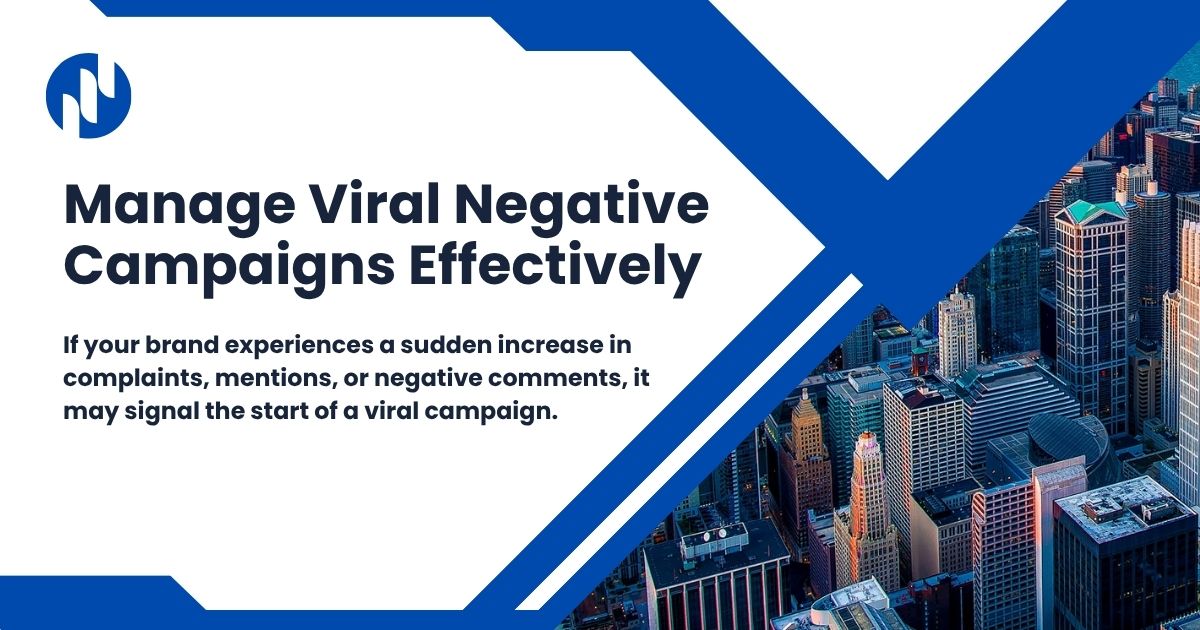
In today’s digital age, a single negative tweet or post can spiral into a full-blown crisis. Managing viral negative campaigns effectively is no longer optional—it’s a necessity. Brands of all sizes are vulnerable to social backlash that spreads rapidly, damages credibility, and impacts sales. This blog will guide you through identifying early signs of negative campaigns, planning crisis responses, and using strategies to protect and restore your brand reputation quickly and confidently.
Spot the Early Signs of a Viral Campaign
Watch for Sudden Spikes in Negativity
If your brand experiences a sudden increase in complaints, mentions, or negative comments, it may signal the start of a viral campaign. Monitoring tools can help detect these surges early.
Differentiate Between Real Issues and Attacks
Viral negativity can come from real customer dissatisfaction or be part of a coordinated smear effort. Recognizing the difference helps you respond appropriately.
Understand Why Negative Campaigns Go Viral
Emotions Drive Engagement
Content that sparks outrage or fear spreads faster. If your brand is perceived as unethical or offensive, people will share that message without verifying facts.
Influencers and Movements Amplify Issues
A single influential post can snowball if it aligns with broader social movements. This adds fuel to the fire and gives the campaign more traction. Algorithms push content that gets engagement—negative or not. This often favors viral criticism over balanced or positive messaging.
Click here and know about How to Write a Social Media Crisis Statement That Saves Your Brand
Prepare Before a Crisis Happens

Create a Crisis Playbook
A solid crisis plan includes who does what, how fast to respond, what to say, and where to say it. Pre-written message templates can save time during high-pressure moments.
Monitor Brand Mentions and Sentiment
Use listening tools to track keywords, mentions, and sentiment trends related to your brand. Real-time insights can help you act before the situation escalates. Ensure your customer service, PR, and social teams know how to handle backlash. Practice crisis drills so everyone is prepared to respond under pressure.
Respond Fast and Strategically
Acknowledge the Situation Quickly
Staying silent sends the wrong message. Acknowledge the issue, show empathy, and commit to finding solutions.
Form Your Crisis Response Team
Pull together your core crisis team—PR, legal, marketing, and leadership. Align on key messages and deploy them across all channels. Whether it’s a product error, a misunderstood post, or misinformation, identify what triggered the backlash. Your response must address the core issue.
Take Control of the Narrative
Stick to the Facts
Avoid emotional or defensive responses. Communicate calmly with verified facts. Correct falsehoods without blaming or shaming.
Use Your Own Platforms
Post responses on your official website, blog, and social media. These are your most trusted sources and will help reshape the story.
Show Accountability
If your brand made a mistake, own it. Apologize sincerely and outline the actions being taken to make things right.
Activate Your Supporters
Empower Your Loyal Customers
Invite happy customers to share their stories. Positive testimonials can help drown out negative chatter and balance the narrative.
Leverage Employees as Advocates
Let employees who believe in your brand share their perspectives. Their voices offer authenticity that outsiders often trust. Share past community efforts, ethical initiatives, or company values. This reminds your audience that your brand stands for more than one incident.
Track Reactions and Adjust Accordingly
Watch for Sentiment Shifts
Once your response goes live, continue monitoring public sentiment. Are people calming down? Are new claims surfacing? Stay alert.
Evaluate Campaign Effectiveness
Assess which actions helped and which didn’t. Look at data like engagement, bounce-back in customer trust, and media coverage.
Avoid Defensiveness
Being overly defensive or combative often backfires. Let your facts speak, respond calmly, and keep the focus on fixing the problem.
Rebuild Brand Trust and Loyalty

Make a Closing Crisis Statement
When the crisis statement is under control, issue a summary of actions taken. Transparency shows maturity and helps close the loop with your audience.
Deliver on Promises
Whether you promised to fix a policy, improve a product, or issue refunds—follow through. Trust can only be rebuilt through action.
Refocus on Your Brand Story
Once calm is restored, return to regular brand messaging. Highlight your purpose, success stories, and vision to steer the conversation forward.
Strengthen Long-Term Reputation Defense
Promote Ethical Values Internally
The best defense is a strong brand culture. When values are lived internally, they reflect externally. Ethical brands are more resilient to attacks.
Invest in Brand Protection Tools
Set up alert systems for emerging issues. Tools that track digital chatter help you spot early signals and take preemptive action. Foster genuine relationships with your audience. A connected community is more likely to defend your brand and less likely to believe negativity blindly.
Final Thoughts
Viral negative campaigns can shake a brand—but they don’t have to break it. With a proactive mindset, clear crisis strategy, and commitment to transparency, your brand can weather the storm and even grow stronger from it. When negativity goes viral, remember: speed, empathy, truth, and leadership are your greatest assets.



















No Comments